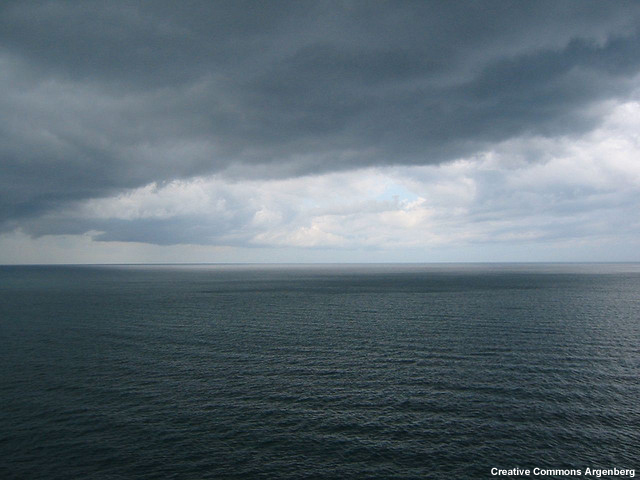Reporting Present and Significant Weather
You should report all present weather occurring at the ship at the time of the observation using the symbols and intensity signs given in the summary table here. Obscurations should be entered for any obstructions restricting the prevailing visibility to 6 nm or less. Enter phenomena not occurring directly at the ship in the remarks section.
| Intensity or Proximity | Intensity/Proximity Symbol | Descriptor | Precipitation | Obscuration | Other | |
| Light | - | MI Shallow | DZ Drizzle | BR Mist | PU Well-developed Dust/Sand Whirls | |
| Moderate | (no symbol) | PR Partial | RA Rain | FG Fog | SQ Squalls | |
| Heavy | + | BC Patches | SN Snow | FU Smoke | +FC Tornado or Waterspout | |
| Vicinity | VC | DR Low Drifting | SG Snow Grains | VA Volcanic Ash | FC Funnel Cloud | |
| Distant | DSNT | BL Blowing | IC Ice Crystals | DU Widespread Dust | SS Sandstorm | |
| SM Showers | PL Ice Pellets | SA Sand | DS Duststorm | |||
| TS Thunderstorm | GR Hail | HZ Haze | ||||
| FZ Freezing | GS Small Hail or Snow Pellets | PY Spray |

The Remarks and Supplemental Coded Data section should include information about:
- Breaks in an obscured sky condition.
- Conditions significant to aircraft or ship operations.
- The direction and location of visible phenomena in a clockwise order using the eights of the compass.
- Movement of clouds or other phenomena with respect to the location and direction toward which the phenomena are moving.
- Distances of the phenomena based on radar, pirep, or other reliable estimation. Phenomena occurring between 5 and 10 nm are reported as Vicinity (VC). Phenomena occurring beyond 10 nm are considered Distant (DSNT).
- Remarks pertaining to tornadic or thunderstorm activity may be combined with those for cumulonimbus or cumulonimbus mammatus when the direction of movement is the same.
- Three- and six-hourly synoptic cloud types should be entered. A "0" should be encoded if no cloud is present at a low, middle, or high classification.
- The 5appp pressure tendency should be included in the three- and six-hourly observations only when the ship is at anchor or moored for more than 3 hours.
- The sea-level pressure SLPppp should be included in hourly observations and encoded in tens, units, and tenths of sea level pressure.